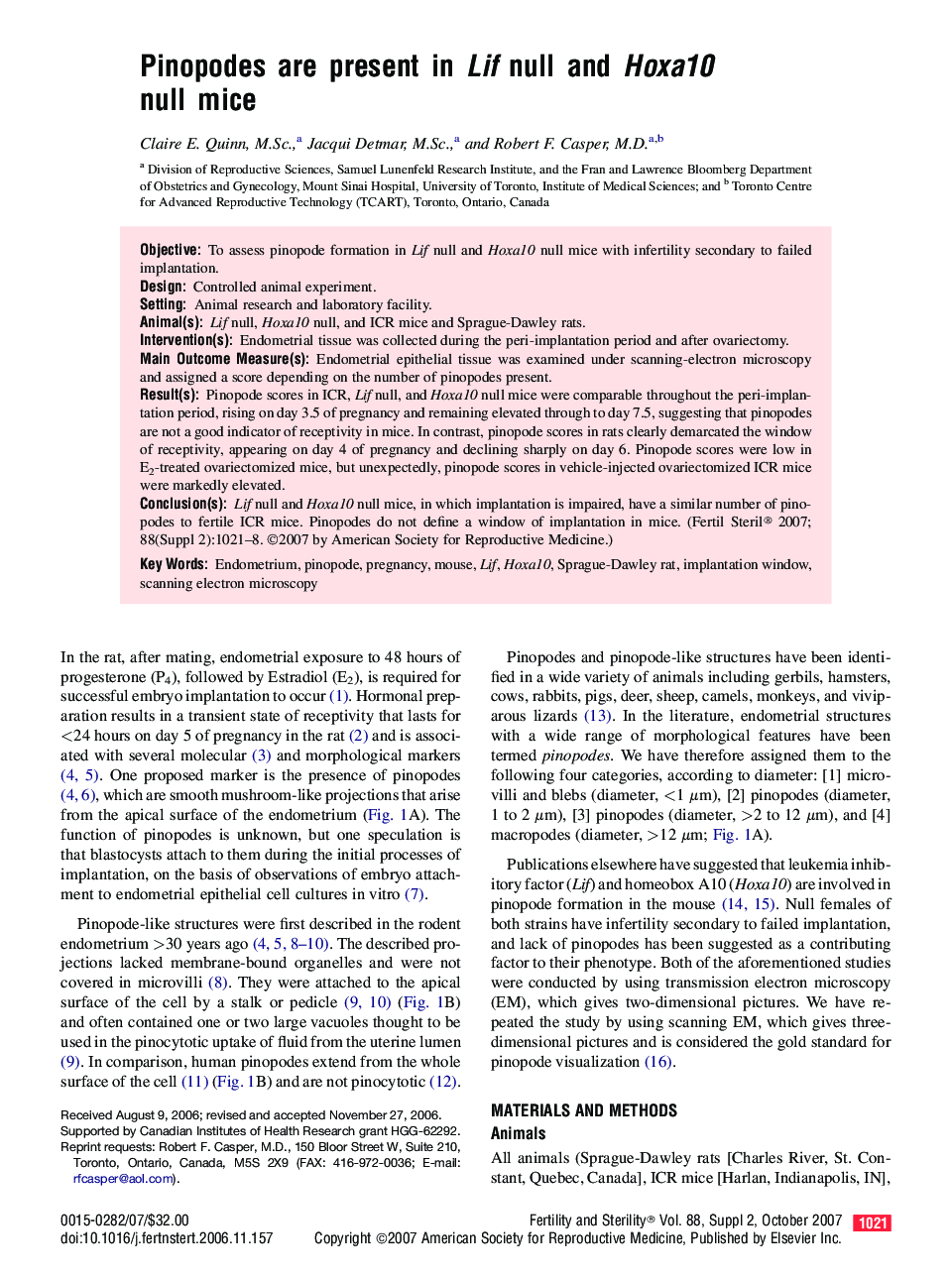| Article ID | Journal | Published Year | Pages | File Type |
|---|---|---|---|---|
| 3937477 | Fertility and Sterility | 2007 | 8 Pages |
ObjectiveTo assess pinopode formation in Lif null and Hoxa10 null mice with infertility secondary to failed implantation.DesignControlled animal experiment.SettingAnimal research and laboratory facility.Animal(s)Lif null, Hoxa10 null, and ICR mice and Sprague-Dawley rats.Intervention(s)Endometrial tissue was collected during the peri-implantation period and after ovariectomy.Main Outcome Measure(s)Endometrial epithelial tissue was examined under scanning-electron microscopy and assigned a score depending on the number of pinopodes present.Result(s)Pinopode scores in ICR, Lif null, and Hoxa10 null mice were comparable throughout the peri-implantation period, rising on day 3.5 of pregnancy and remaining elevated through to day 7.5, suggesting that pinopodes are not a good indicator of receptivity in mice. In contrast, pinopode scores in rats clearly demarcated the window of receptivity, appearing on day 4 of pregnancy and declining sharply on day 6. Pinopode scores were low in E2-treated ovariectomized mice, but unexpectedly, pinopode scores in vehicle-injected ovariectomized ICR mice were markedly elevated.Conclusion(s)Lif null and Hoxa10 null mice, in which implantation is impaired, have a similar number of pinopodes to fertile ICR mice. Pinopodes do not define a window of implantation in mice.
